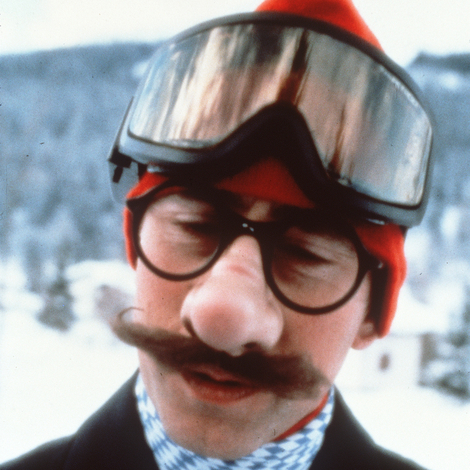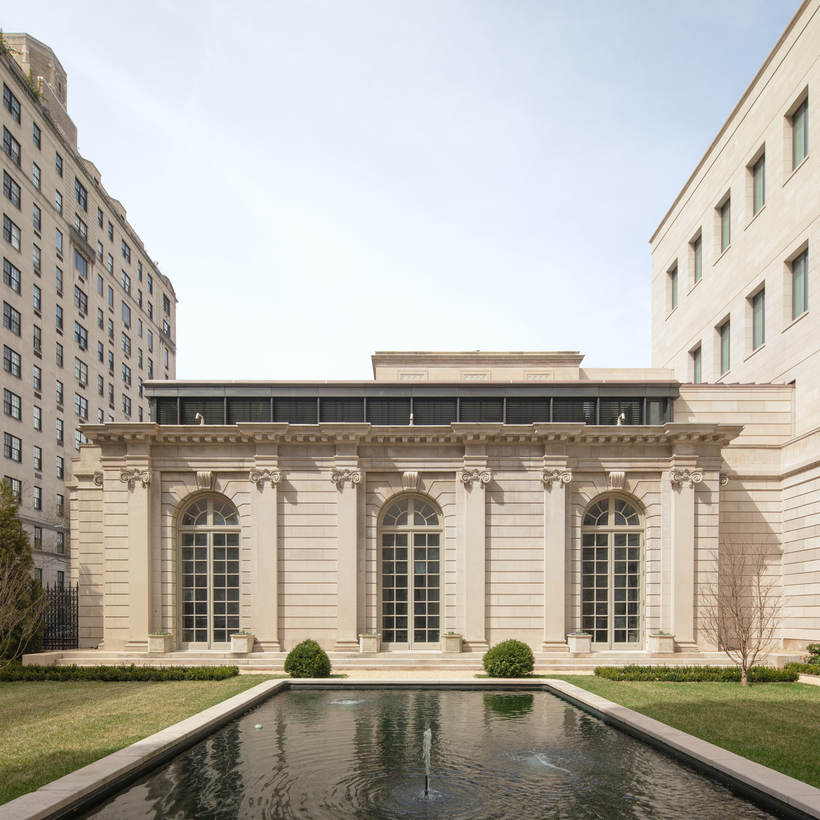Last month, the Frick Collection reopened after nearly five years. Though its highlights had been exhibited at the nearby Breuer Building in the interval, seeing them installed again in their Fifth Avenue home felt like stepping into pre-pandemic New York—or, for the first-time visitor, into the city’s Gilded Age. The supporting architecture has been upgraded, the hang has changed at the margins, and one can finally climb the formerly closed-off staircase to another floor of galleries.
Yet the experience is the same: the beauty, quality, and setting are transporting. A year ago, the glories of European Paintings 1300–1800 at the Met were re-examined in Air Mail, which has inspired this equally subjective sequel of favorites (as opposed to 10 “best”) at the Frick.
1.
Giovanni Bellini, St. Francis in the Desert, circa 1475–80

A holy masterpiece doubling as one of Western art’s finest early townscapes, St. Francis in the Desert shows the 13th-century saint soon after receiving the wounds of the crucifixion. (See his open palms and the cross, crown of thorns, and skull under the canopy in the lower right.) Bellini’s unexampled mastery of light, color, and architectural and natural detail—the animals and shepherd turn to the sky, but only the laurel and St. Francis bend, parallel with the lectern’s gentle slope, to its radiance—captivated Henry Clay Frick, who tended to avoid religious paintings. It hangs today in the same place it did in his lifetime, flanked by the Titian portraits.
2.
Hans Holbein the Younger, Sir Thomas More, 1527

Holbein moved from Basel to London in 1526 with the help of his friend and frequent subject, the scholar and theologian Desiderius Erasmus. His first introduction for the painter was to Thomas More, King Henry VIII’s adviser on the Royal Council, who was quick to recognize the talent of this “wonderful artist.” Here is Holbein’s original likeness of More—Laurence Olivier’s 16th-century doppelgänger—the highlight of which may be the magical shimmer of its fabrics. Holbein’s sitters on this ill-starred wall (the beady, porcine Thomas Cromwell is to More’s right) would lose their heads on the scaffold; each still lives and breathes on panel.
3.
Paolo Veronese, Wisdom and Strength, circa 1565

Wisdom and Strength, one of the Frick’s two stunning allegories by Veronese, contrasts the title’s ideals at left and (as Hercules) right. As with its informal pendant, The Choice Between Virtue and Vice, its first owners were Emperor Rudolph II and Queen Christina. For those interested in learning more, Peter Watson devoted an entire book to its history in 1989.
4.
Sir Joshua Reynolds, General John Burgoyne, circa 1766

Previously owned by Frick’s fellow tycoon J. P. Morgan, Reynolds’s Burgoyne is the general and occasional playwright at his most dashing and imperious. (The staging of his farce, The Blockade, in British-occupied Boston in early 1776 was interrupted by Thomas Knowlton’s raid at Charlestown. In 1777, “Gentleman Johnny” surrendered to Horatio Gates at Saratoga.) Conventionally (psychotically?) unbothered by the battle raging at his back, he has the poise and pallor distinctive of Reynolds. The ghostliness is the unintended result of faded pigment.
5.
Thomas Gainsborough, The Mall in St. James’s Park, circa 1783

Gainsborough’s friend William Pearce, the Chief Clerk to the Admiralty, reported the genesis of The Mall in St. James’s Park: “King George III … expressed a wish to have a picture representing that part of St. James’s Park which is overlooked by the Gardens of the Palace—the assemblage being there, for five or six seasons, as high and fashionable as Ranelagh … ‘His Majesty,’ said Gainsborough, ‘very sensibly remarked that he did not desire the high finish of Watteau, but a sketchy picture’ and such was the picture produced.” The King’s “sensible” request is ironic, for subsequent commentators have remarked on the scene’s resemblance to Watteau.
6.
Francisco Goya y Lucientes, The Forge, circa 1815–20

Related to the axe-wielding terror in Lo Mismo (an etching from Goya’s Desastres) and the Met’s sepia-wash drawing of three men digging, Goya’s The Forge is undoubtedly the rawest and most modern motif in the Frick, as far from Fragonard’s Progress of Love as can be imagined.
7.
John Constable, The White Horse, 1819

For as long as I can remember, I have loved The White Horse more than any other work of art, and it is not particularly close. Kenneth Clark said that Constable had “the slowest start of any painter before the time of Grandma Moses”; by his 40s, he’d reached heights no British artist outside of Blake, Turner, or Bacon approached. (See also the later Salisbury Cathedral from the Bishop’s Grounds and pair of cloud studies on the second floor.)
Constable wrote of The White Horse, “There are generally in the life of an artist, perhaps one, two or three pictures, on which hang more than usual interest—this is mine.” He judged himself wisely. Constable would buy it back in 1829, 10 years after its debut at the Royal Academy, and keep it for the rest of his life. Its idyllic pleasures are more powerful and reassuring than ever.
8.
Joseph Mallord William Turner, Harbor of Dieppe: Changement de Domicile, 1826

This is perhaps an unusual choice as I have always found the composition’s vast quantity of figures to have the coarseness of Rowlandson’s caricatures without their humor. (The subtitle likely refers to the couple at right.) But they serve to balance and accentuate the effect of Turner’s sublime reflections. And what light! Normandy has never looked so golden.
9.
Camille Corot, The Lake, 1861

What The Lake, Corot’s large-scale submission to the 1861 Salon, lacks in vibrancy it more than makes up for in the skill and honesty of its brushwork. If Frick’s collecting interests leave off shortly before the Impressionists—single examples by Degas, Monet, and Renoir notwithstanding—and decades before the moderns, Corot anticipated the groundbreaking 1870s and what was to follow.
10.
Édouard Manet, The Bullfight, 1864

Incident in the Bull Ring, the title of the larger canvas The Bullfight and the National Gallery’s Dead Toreador initially comprised, was among Manet’s famously vexed Salon entries. (His worst notices may have come the next year for Olympia, which one contemporary likened to hell—and an 18th-century parody of hell, at that.)
The critic Théophile Gautier derided the “microscopic bull” and the “much too large” toreadors. Just one man’s opinion? Hector de Callias likewise mocked the “microscopic” bull: “But that’s due to the perspective, you’ll say. Not at all. In the background, against the tiers of the arena, the toreros are quite in proportion and appear to be laughing at this little bull which they could crush under the heels of their pumps.” Edmond About described Incident in the Bull Ring as “a wooden toreador killed by a horned rat.” And Louis Leroy, remembered for sneeringly coining the term “Impressionism” in 1874, invited Manet to spend time in slaughterhouses—and suggested he have his eyes examined.
Manet evidently accepted the criticism and cut and reworked the upper and lower sections into separate fragments. (In 1867, Émile Zola believed Manet had saved the Dead Toreador and discarded the rest.) Does the truncated Bullfight add up? Its experimental handling and format are as striking to me now as when I first discovered them. So what if the central toreador looks like he is dunking on his eight-year-old son’s basketball hoop? The Bullfight succeeds on its terms and reminds us, as the Frick’s wall-to-wall treasures generally do not, that the path to greatness is rarely straight.
Max Carter is chairman of 20th- and 21st-century art at Christie’s in New York


